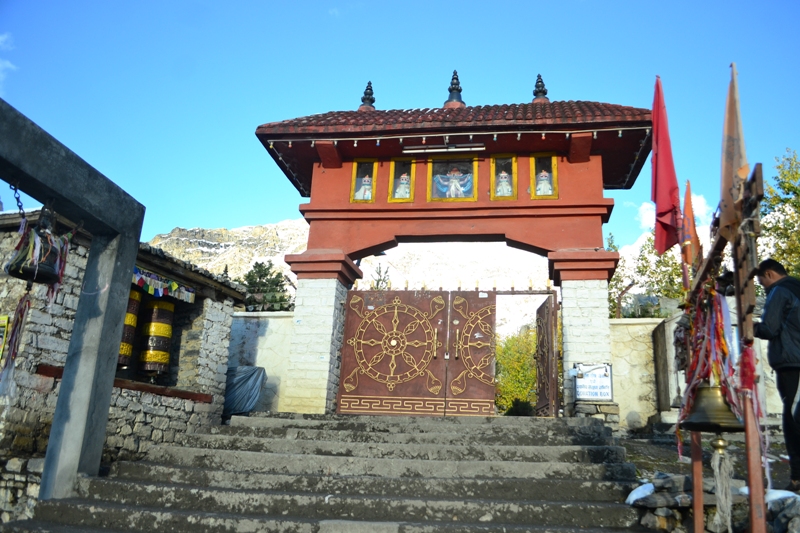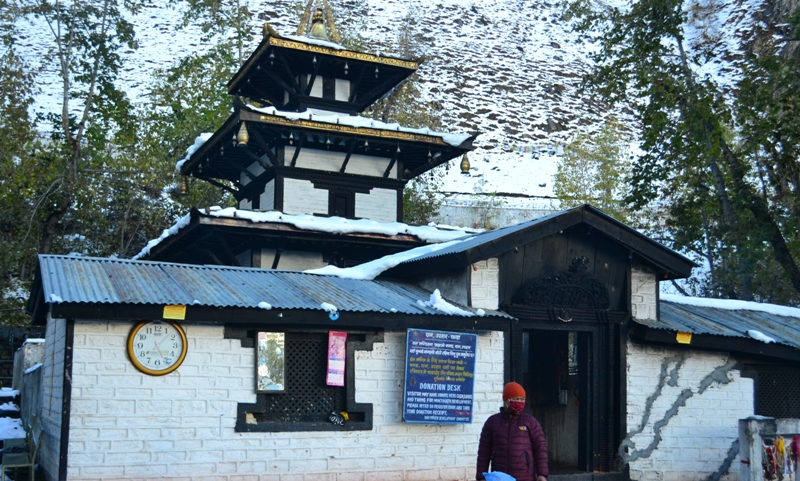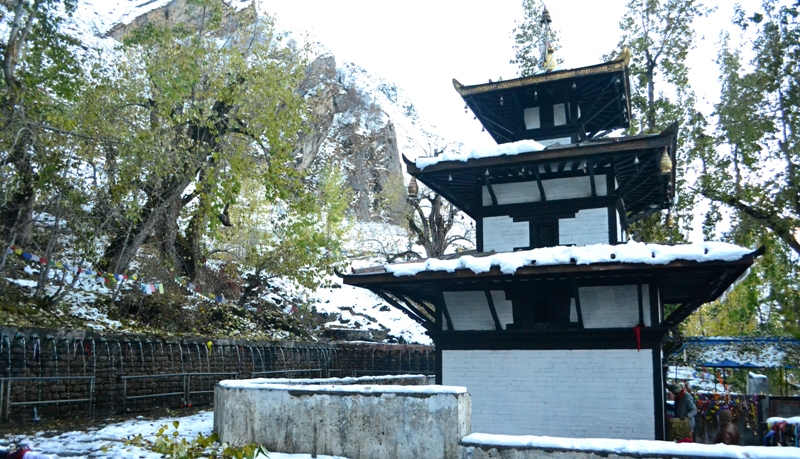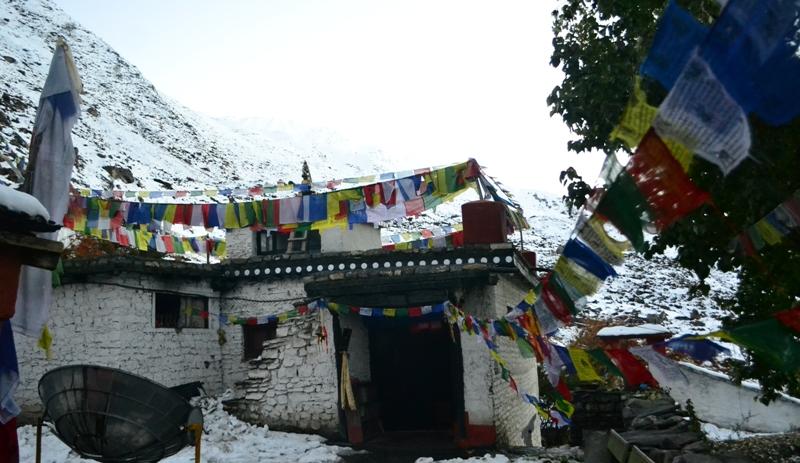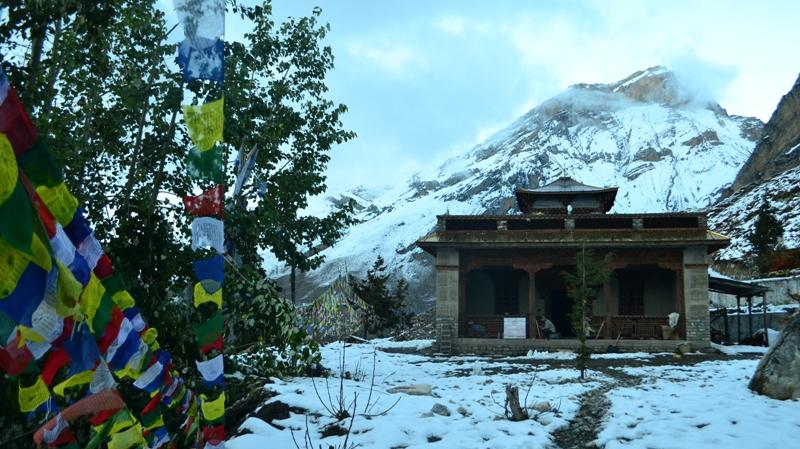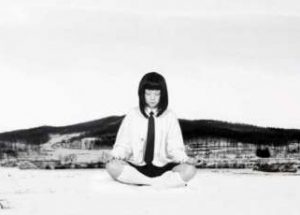“ . . . I accept all religions that were in the past, and worship with them all; I worship God with every one of them, in whatever form they worship Him. . . .” – Swami Vivekananda (Green Message)
Wise men have always tried to spread the message of religious acceptance and imagined a world where people embraced those of different faiths with open arms. One place that has stood the test of time in demonstrating harmony amidst religious heterogeneity is Muktinath in Nepal. Situated on the Annapurna Circuit at an altitude of 12,300 feet and about 20 kilometers northeast of Jomsom, the headquarters of the remote Mustang District, Muktinath is one of the world’s most revered and sacred pilgrimage sites for Hindus and Buddhists alike.
In Sanskrit, mukti means “liberation” and nath means “lord”: Muktinath therefore means “The God of Salvation.” The name refers to both the main temple and the area as a whole, which is also considered very holy. Hindus also call the region Mukti Kshetra, or “The Place of Salvation,” and believe that a person attains moksha, or freedom from the cycle of birth and rebirth, after visiting the holy shrine. Vaishnavites (followers of Vishnu in Hinduism) revere Muktinath as one of the Divya Desams (the 108 supreme places) where Lord Vishnu resides. The sacred water that flows in 108 stone spouts at the back of the main temple represents water from all 108 Vaishnava shrines. Similarly, the Tibetan name for Muktinath is Chumig Gyatsa, which means “The Hundred Springs.” For both Tibetan Buddhists and the Himalayan Buddhists of Nepal, it is venerated as one of the 24 places where Guru Rinpoche practiced in the 8th century on his way from India to Tibet, and is a very important place where dakinis (dancing goddesses who are manifestations of energy in space) are said to reside. The nuns of Chumig Gyatsa are also considered to be dakinis, being the offspring of the females who lived there during Guru Rinpoche’s time and were taught by him; when the time came for him to leave, he built a statue in his own image, which resides in the Mharme Lhakhang Gompa and is tended by the nuns to this day.
The main shrine at Muktinath is a small, three-tiered, pagoda-style temple containing a life-size statue of Vishnu, venerated by Hindus as Shri Muktinarayana and by Buddhists as Avalokiteshvara (T. Chenrezig), the bodhisattva of compassion. The main idol is flanked by bronze statues of the Hindu goddesses Lakshmi (wealth) and Saraswati (knowledge). There are also three smaller metal statues of the Buddhist deities Hopagme, Chepagme, and Vajrasattva (T. Dorje Sempa) in front of the statue of Muktinarayana, which were brought here from the nearby Narsingh Gompa for safekeeping. Although historians and researchers trace the origin of Muktinath back around 2,000 years, the present pagoda-style temple was constructed around 1814 and renovated in 1929. The building was again overhauled as recently as 2012.
To the east of the main temple is Dhola Mebar Gompa, which is also called Jwala Mai (Goddess of Fire) Temple by Hindus. It is built above an underground stream, and small natural gas jets underneath the gompa produce continuously burning flames. This adds to the religious belief that all the elements are represented at Muktinath—not only earth, air, water, and ether, but also fire. Mharme Lhakhang Gompa lies to the north of the main temple, and contains the above-mentioned image of Guru Rinpoche, which is very large and made of clay, along with statues of Vajrabhairava and Guru Dragpo-seng-dong yabyum, a lion-headed wrathful deity that is also worshipped by Hindus as Narsingha (an avatar of Vishnu). Hence, the monastery is also called Narsingh Gompa.
Another temple, Sangdo Gompa, can be found to the left of the entrance gate of the Muktinath complex, near a temple dedicated to the Hindu god Shiva. This gompa was rebuilt by villagers of Khingar and Jharkot, and today houses statues of Shakyamuni, Chenrezig, and Guru Rinpoche. The original gompa was built by Lama Sangdo in the 19th century and was the lamas’ residence. Lama dances were also performed there sometimes as well.
A wonderful religious concord can be seen in the modus operandi of worship in the main temple. The day’s religious ceremonies begin with morning puja and prayers conducted
by the Hindu priest in charge of the temple, who then hands over to a Buddhist nun, called “Aani” or “Jhuma.” The nun takes care of the services for the rest of the day, handling the offerings made to the deity by both the Hindu and Buddhist devotees, and giving them the blessed flowers and fruit from the sanctum. In the evening, the Hindu priest returns to conclude the day’s services with an evening puja and the Hindu lamp-offering ceremony known as aarti.
“The unification campaign led by King Prithvi Narayan Shah led to the inclusion of Mustang in greater Nepal in 1789, and this region came into the hands of the Hindu king,” Krishna Subedi, the Hindu priest, told me. “His daughter-in-law, Queen Suvarna Prabha Devi, arranged for the religious services to be performed by Hindu priests. Many Hindu priests left this mountainous region for lower hills as they found the place too cold; however, they arranged for the morning and evening prayers to be performed by one of them, and left the rest in the hands of the ‘Jhumas.’”
The Muktinath area is busy throughout the year, but especially during the Hindu festivals of Janai Purnima (full moon day of the sacred thread), Ram Nawami (a festival celebrating the glory of Lord Rama), and Vijaya Dashami (the most important Hindu festival, celebrating the victory of the gods over demons), when it is thronged with thousands of Hindu pilgrims. Buddhists celebrate festivals like Losar (New Year), Toranla (the archery festival), and Bakchhap (Lama Dance festival). “Yartung,” which means “the end of summer,” is a special festival during August/September for which villagers gather from as far away as the districts of Dolpa, Lamjung, Manang, and Upper and Lower Mustang. They spend the morning of the festival making obeisance to their deities; however, the main attractions are the competitive horse race and the dance performances by village troupes.
The Muktinath region is a true testament to cultural and religious symbiosis, where Hindu temples and Buddhist gompas and chortens coexist. The local Bhotia people follow the Nyingma tradition of Vajrayana Buddhism, but Muktinath is no less a Hindu religious site. The influx of tourists from both religions has helped improve both the inhabitants’ lifestyle and the area’s economy. The mutual respect and support of the two religions here show that they have blended well; yet, each maintains its own identity. This understanding and assimilation of the spirit of the other religion at Muktinath is remarkable indeed.
All photographs are by the author.
References
Dahal, Sharada Prasad. 1988. “Muktikshetra: A Historical, Religious and Cultural Explorations.”
http://www.muktinath.org/download/reference/Muktikshetra_Dahal_1988.pdf.
Ramble, Charles. 1987. “The Muktinath Yartung: A Tibetan Harvest Festival in Its Social and Historical Context.” http://www.tibetanhistory.net/wp/wp-content/uploads/2013/03/Ramble-Muktinath-Yartung.pdf.
For more information, see:
Swami Vivekananda on Religious Harmony(Green Message)
Brief History of Muktinath – Chumig Gyatsa at the Annapurna Circuit – Nepal
Full translation of the Clear Mirror in PDF-format
Part 19: The Meaning of ‘Dakini’ in Muktinath (Pyramid Key)
